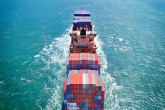Stevedore
Key tasks:
• Communicate effectively and clearly.
• Monitor, inform, advise, and direct the movement of vessel traffic in the port precinct.
• Gather, analyse, and disseminate nautical data and navigational safety information.
• Coordinate advisory information between participating and non-participating vessels and small craft, many of which may be involved activities such as regattas, fishing, or other marine events.
• Provide radar tracking or other sensor information in support of search and rescue missions.
• Operate a variety of surveillance sensors, communications, and data processing equipment.
• Brief other traffic control specialists on all aspects of vessel traffic operations and weather conditions.
Stevedores can also operate as::
• Loaders:
Attach and position straps, cables and hooks to boxes or containers before they are winched or lifted off or onto the ship. Guide the crates out of or into the hold while maintaining safety standards.
• Winch Operators:
Work the winch machinery that lifts the cargo and coordinate the work to ensure the safety of the loaders. Some training in heavy lifting machinery is necessary.
• Crane Operators:
Crane and tower operators need training for operating and maintaining the large machines. Like winch operators, crane operators need a precise sense of spatial relationships and the ability to coordinate movements with loading crews.
• Straddle Carrier Operations:
Stevedores operate straddle carriers, a piece of heavy equipment used to stack cargo containers, up to four high, in a port’s storage area or facility. They also retrieve containers from storage in order to reload them on trucks, barges, and freight trains. Straddle carrier operators are often charged with recording the weight and contents of containers. They may also be responsible for the repair and maintenance of the machines.
Entry requirements/training:
These positions usually require a Matric Certificate with a driver’s licence.
On the job training is generally provided including simulator courses for crane and straddle carrier operators.
Career advancement:
With suitable training, stevedores can advance within the port terminal structure.
Associated job opportunities:
Stevedores, as laborers involved in the loading and unloading of cargo at ports, may be associated with various industry organizations and labour unions that advocate for their rights, provide support, and address common concerns. These associations often work towards ensuring the well-being of stevedores, promoting safety standards, and representing their interests within the maritime and shipping industry. Here are a few examples of associations and unions associated with stevedores:
• International Longshore and Warehouse Union (ILWU)
• International Transport Workers' Federation (ITF)
• International Maritime Employers' Council (IMEC)
• International Dockworkers Council (IDC)



